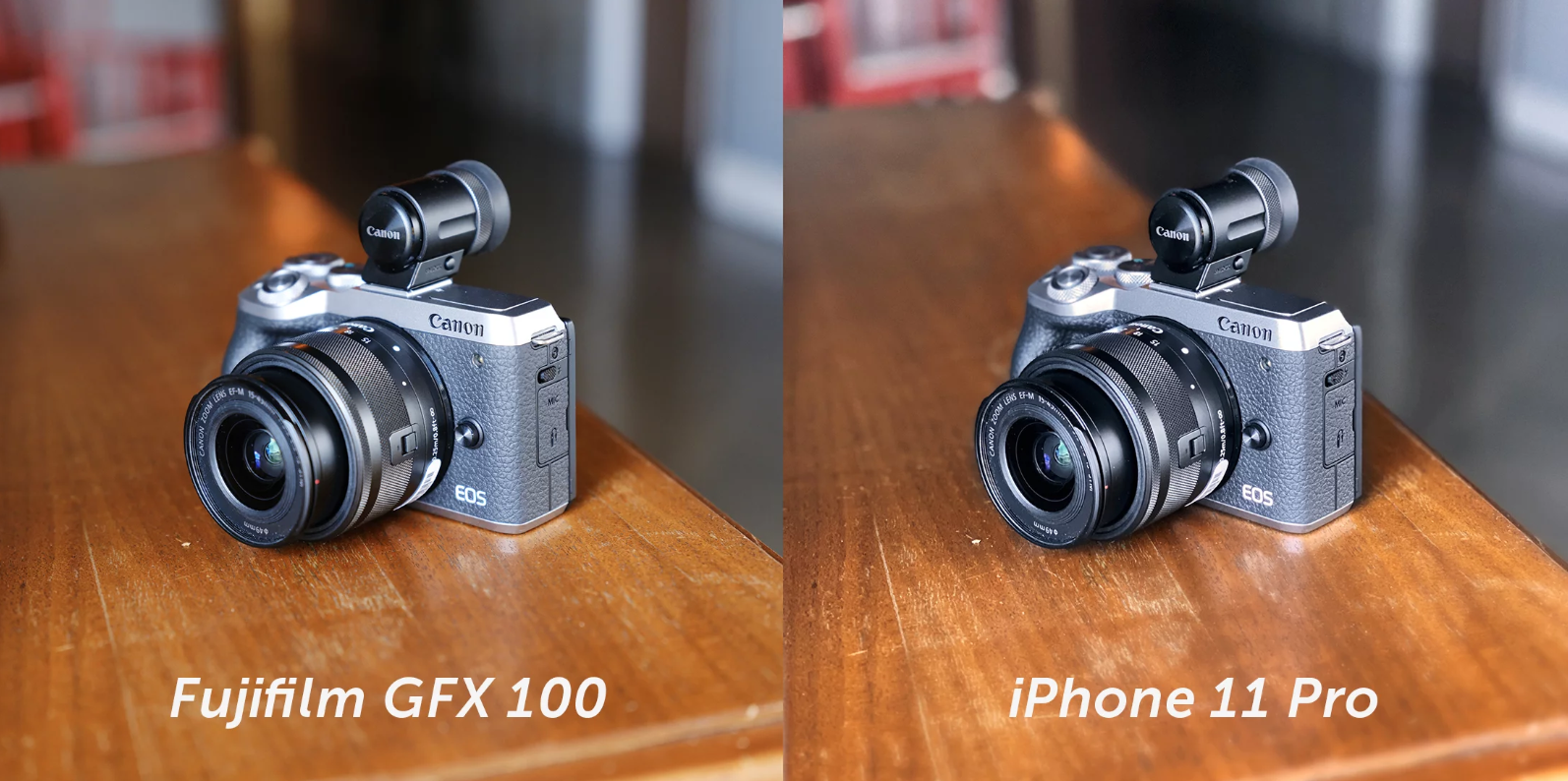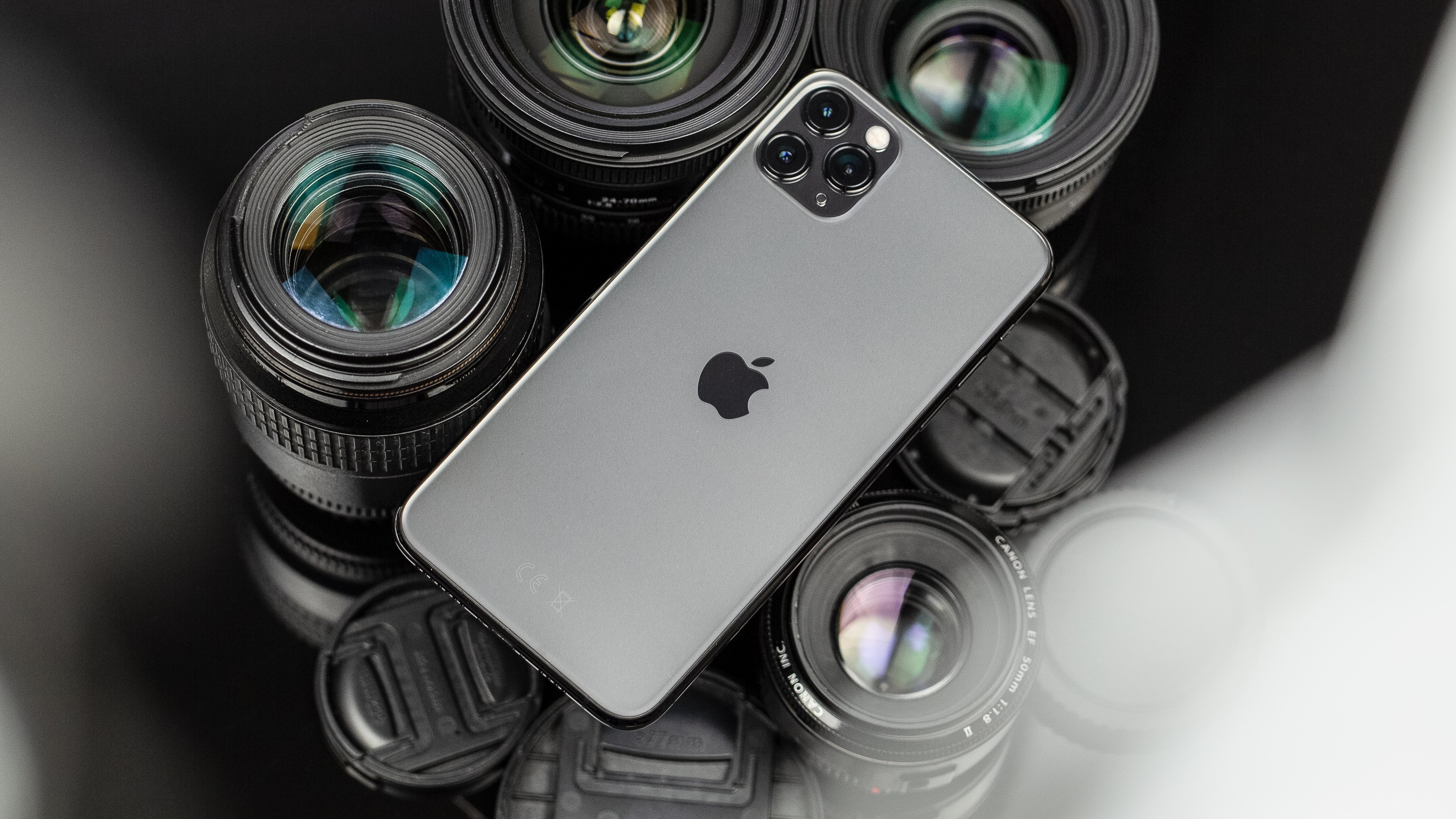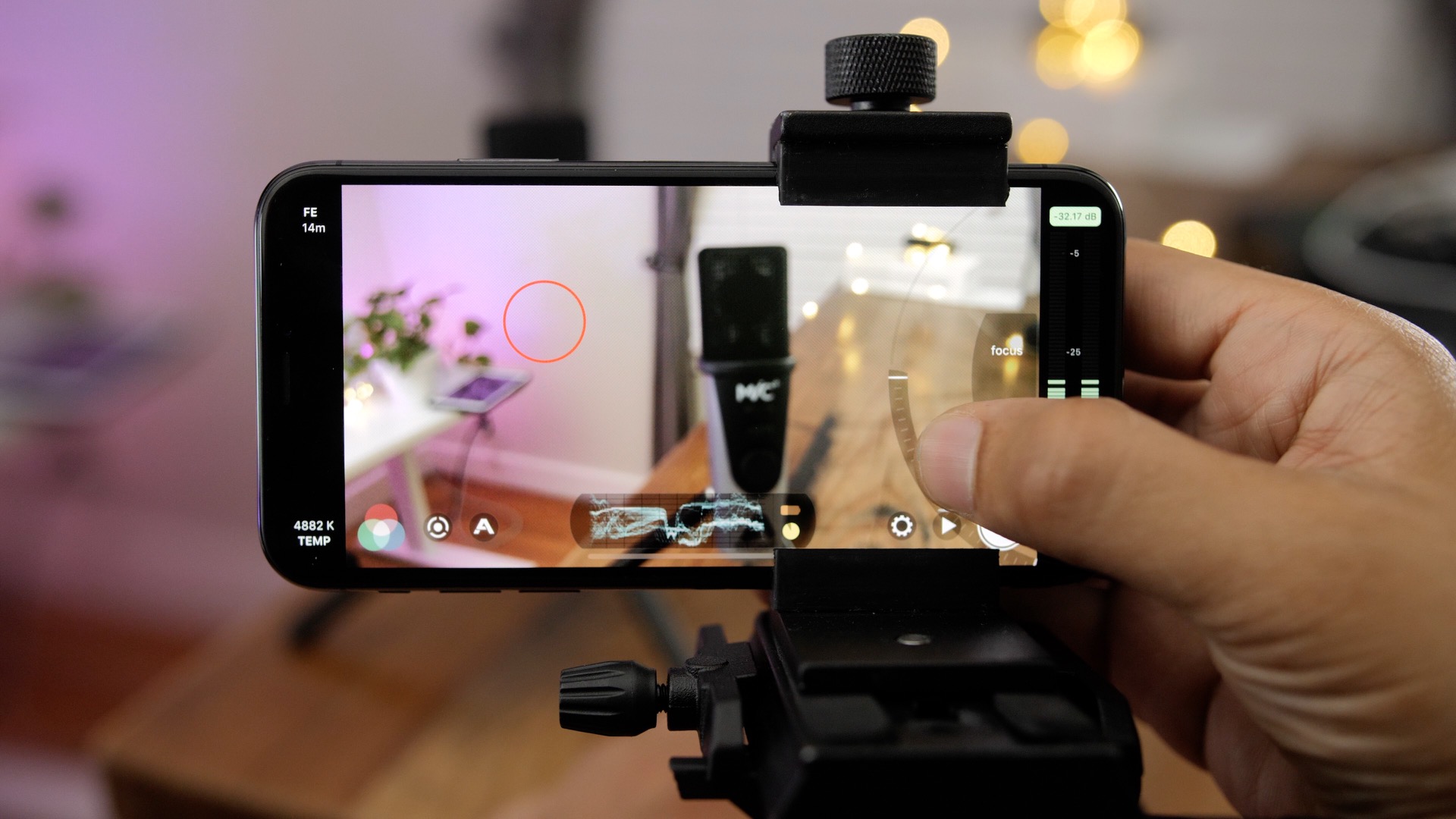
The Night Mode icon pops up automatically when a low-light occasion presents itself, and it will take a pseudo-long-exposure shot, handheld, of course. The Smart HDR 3 name speaks for itself - it's an improved HDR processing algorithm used in scenes with challenging light conditions.

The new Apple image processing that's possible thanks to the new A14 chip includes Smart HDR 3, Night Mode (excluding telephoto), and Deep Fusion.

This really makes for a more immersive camera experience, and if Photo/Video Capture Outside the Frame is enabled, then you can later expand your footage from the Photos app if something important was cut. It allows seeing what will be left outside the frame in real-time by overlaying several cameras' input. You can see outside of the viewfinder thanks to the cameras' precise calibration. The viewfinder of the default camera app is mostly unchanged since iOS 13 and the iPhone 11.

Dolby Vision HDR capturing is possible on all cameras at all framerates. When using portrait mode on this camera, it captures a depth map with the structured-light 3D scanner, and we've seen it do some impressive portraits.Īll cameras support up to video capturing with Cinematic Stabilization (EIS, EIS+IBIS/OIS) and Expanded Dynamic Range. One might say this is the iPhone's fourth camera.įinally, the selfie camera uses a 12MP sensor with 1.0µm pixels and a 23mm f/2.2 lens. The LiDAR Scanner assists the main and portrait cameras with detailed depth maps for portraits and faster autofocus in low-light conditions. The Portrait Night Mode is available only on the main camera. This camera supports PDAF, but what it cannot do is Night Mode. The lens is now 65mm f/2.2, optically stabilized. There are no exclusive features on the ultrawide shooter for the 12 Pro Max - it is the same cam across all four iPhone 12 devices.īut the telephoto snapper on the Pro Max has been improved with longer-range zoom lens - it can now offer 2.5x optical zoom. This camera, like the main one, supports Night Mode. The focus is fixed, and there is no stabilization whatsoever. The ultrawide camera uses a 12MP imager, too, with smaller 1.0µm pixels and 13mm f/2.4 lens. Unlike OIS, this system can also counter the camera's rotational movements in addition to the usual X- and Y-axis movements. The new sensor-shift stabilization should allow for better video stabilization, too. Sensor shift stabilization should be better than OIS in low-light photos, allowing for longer shutter speeds. To be specific, the sensor-shift stabilization on the iPhone 12 Pro Max allows for up to 5,000 adjustments per second. And since the sensor is just a single piece on a flat surface - adjustments happen much faster than on a seven-piece optical lens assembly. The more space the sensor is allowed to move within its frame - the better the stabilization. The sensor-shift stabilization moves the entire sensor to counter shake instead of shifting the lens. Instead, this camera uses sensor-shift stabilization, meaning it's the sensor that is stabilized in real-time and not the lens akin to the in-body stabilization or IBIS seen on many large-sensor digital cameras. The lens is still 26mm f/1.6, but it is not optically stabilized. This should help it capture better low-light photos with less noise.
#Camera plus pro iphone app upgrade#
The primary camera features the first major upgrade in a long time - it still uses a 12MP sensor, but now, it is 47% larger than the iPhone 11 Pro and 12 Pro's with bigger 1.7µm sensor pixels. The Structured light camera used for Face ID assists the Portrait mode for selfies. The selfie camera is identical across all four iPhone 12s - it's a 12MP snapper with fixed focus. The LiDAR scanner assists the autofocus and helps take portraits with realistic defocused background. The iPhone 12 Pro Max offers a triple 12MP camera on its back, just like the regular iPhone 12 Pro and 11 Pro, but the hardware is different. We've talked about that through our iPhone 12 reviews, and today we are finally going to find out if this Pro Max camera is praiseworthy.
#Camera plus pro iphone app series#
The improved camera hardware Apple introduced with iPhone Series 12 turned out to be exclusive to the iPhone 12 Pro Max.


 0 kommentar(er)
0 kommentar(er)
